
A Guide to Spring Blooms in Cascadia
For many of us, staying close to home this spring has sparked a renewal of genuine gratitude for our nearby green spaces. Wildflowers especially have a way of inspiring such feelings and in these early days of May you’re sure to encounter a dozen varieties on your favorite nature walk. Please enjoy this bouquet of photos captured by Institute staff with colorful descriptions by Evan Holmstrom and Alexa Brandt.

Red Flowering Currant, Ribes sanguineum: This vibrant flowering shrub is cherished for its plentiful blossoms — not only by humans, for the flowers act as veritable hummingbird homing beacons. So planting it in your yard is a double-win if you’re looking to add reliable native blossoms and birdlife to your garden. Curiously, the name sanguineum means bloody, though to me it looks a bit more like the filling in a jelly doughnut.
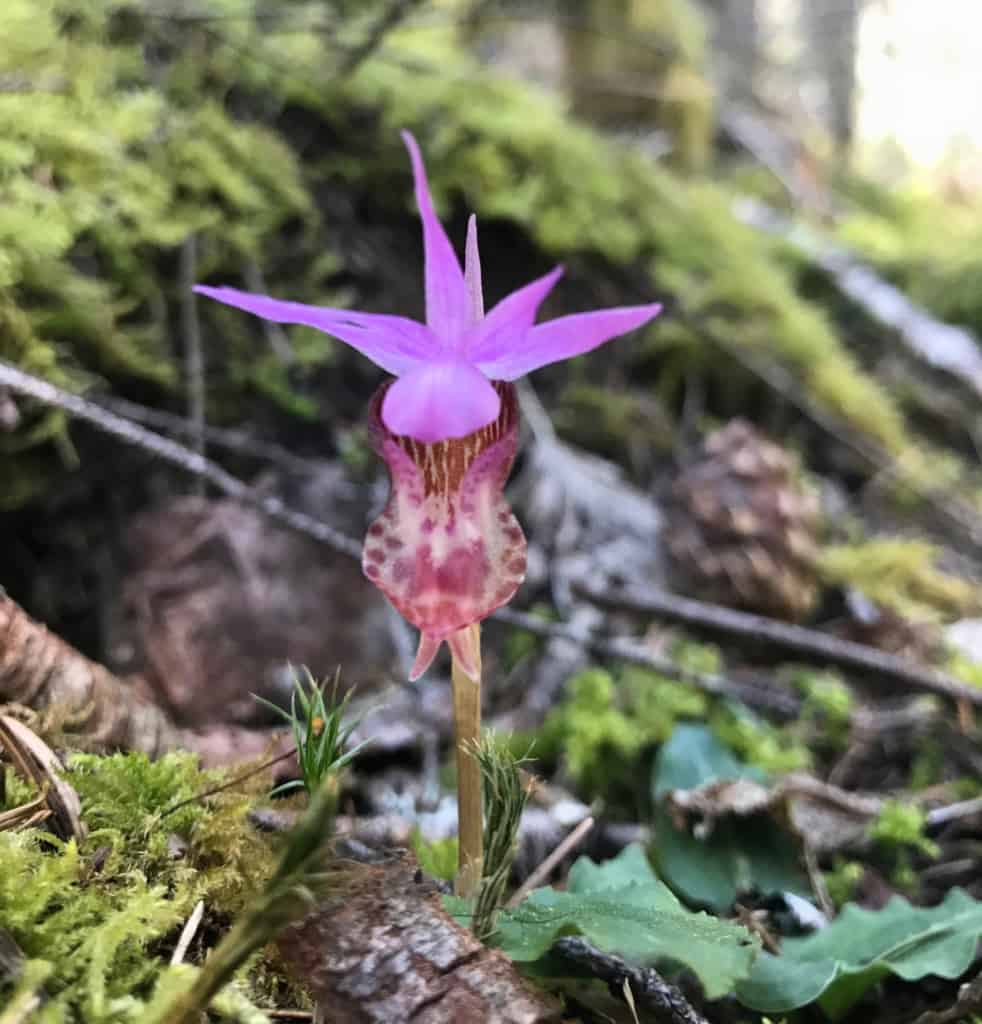
Calypso orchid, Calypso bulbosa: A stunning fuschia surprise, Calypso orchids are found sprouting up in the rich soil of low-to-mid elevation forests. The name Calypso hints at the beautiful, hidden woodland nymph in Greek mythology. As an orchid, this beautiful wildflower catches the eye with its three sepals and two petals that twist and point upwards above the lip in a striking manner. The shape of this purple-spotted lower lip is where this plant gets its other common nickname of “Fairy-slipper”. If you see this perennial while hiking, please try not to disturb it as the roots attached to its corm (similar to a bulb) can be destroyed with the slightest movement.

Skunk cabbage, Lysichiton americanus: Another eye-catching harbinger of spring, this bog-loving member of the calla lily family (Araceae) is often smelled before it is seen. And while we call it skunk cabbage, I encourage you to sit down near one and really take that smell in. Analyze it with your nose. You’ll find that, yes, it’s certainly pungent, but not without a sort of overripe banana sweetness. Even if you can’t find a way to love its aroma, count your blessings that it’s not actually a skunk you’re smelling!
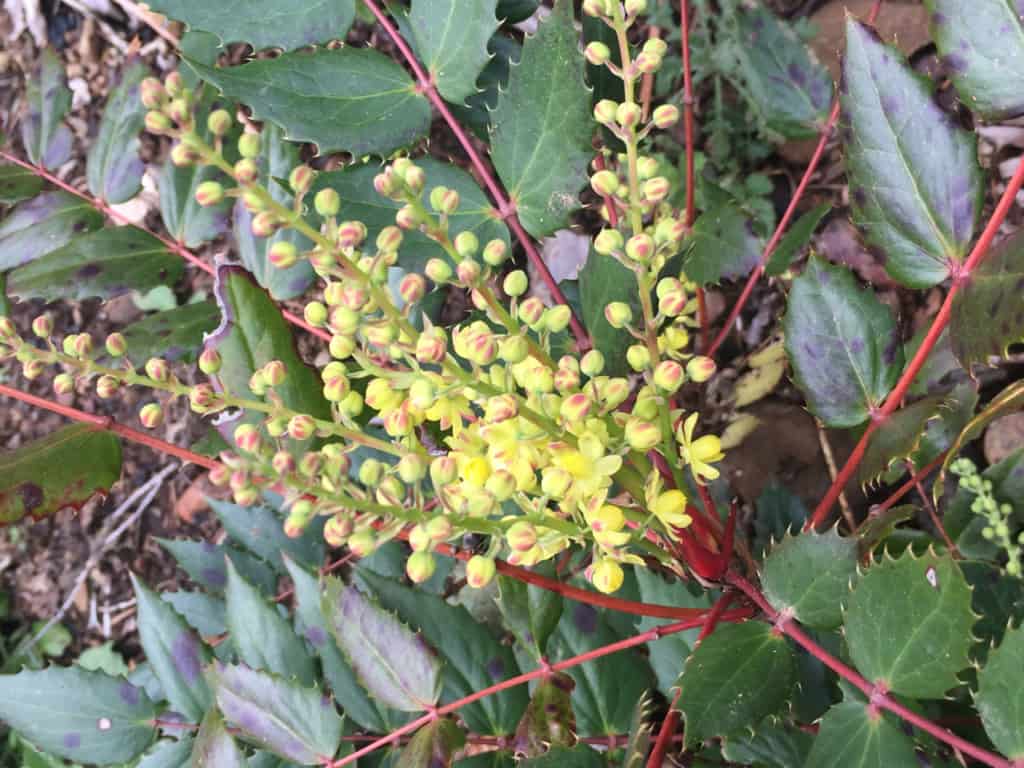
Oregon Grape, Mahonia nervosa: You may be thinking, ‘I think not! This genus is supposed to be Berberis!’. If you are, cool down! Your loyalty to David Douglas is admirable, but things get shifted around all the time in botany and horticulture alike. Why don’t we focus instead on how spectacular this plant is, regardless of its name? Its roots can be made into a yellow dye. The berries (the ‘grapes’) can be eaten for an incomparable experience of sourness, though I recommend spitting the seeds out. Nervosa is of middle height among our three Oregon-grapes and has at least 11 leaflets on its long, elegantly arched pinnately complex leaves.You needn’t search the skies for a rainbow – this one plant has vivid yellow flowers, bluish berries, and evergreen leaves that turn an unabashed scarlet with age.
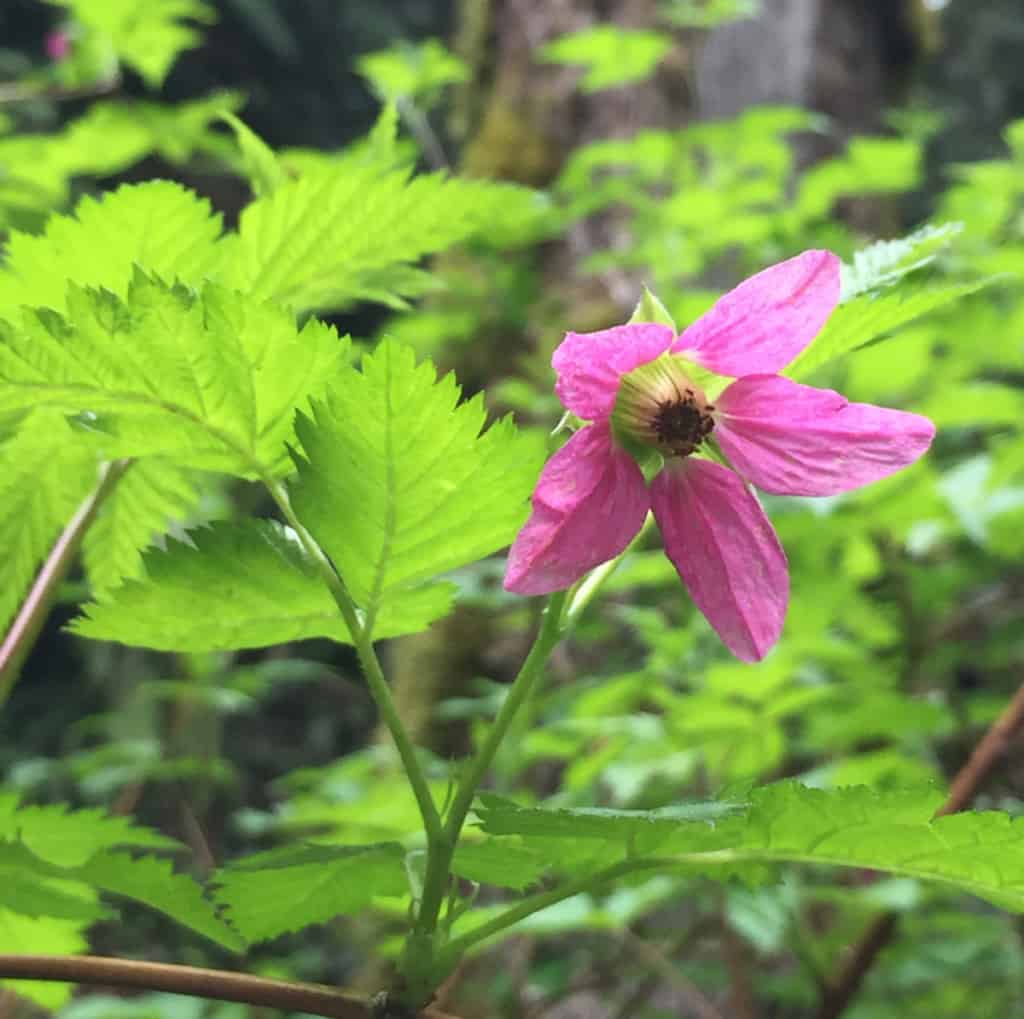
Salmonberry, Rubus spectabilis: An icon such as the salmonberry will always have to contend with competition and fervent public opinion. The timeless debate over the edibility of this plant versus thimbleberry can create sharper divisions than many political issues! And as with politics, it may simply be our formative experiences with the issue at hand that shape our perspective. Maybe you had a thimbleberry the day you met your true love. Its candy-like taste and your oxytocin-soaked brain planted it deeply in the favorable category, nevermind the relative lack of moisture. Or maybe salmonberry was the berry you first found when you were learning to identify our native shrubs. It was your juice-filled fruit of knowledge and now you associate it with breakthroughs. Whatever the case we can all agree that both of these berries are flagship species in our region, and they give our culture something inconsequential to lovingly bicker about while until the sun goes down over the Salish Sea.
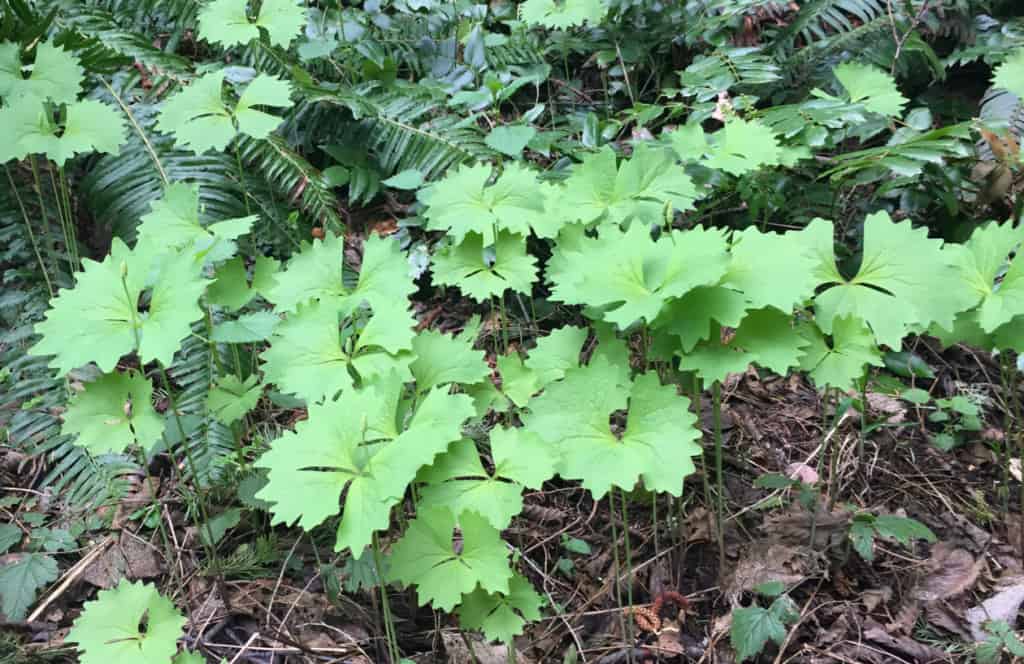
Vanillaleaf, Achlys tryphylla: Often found in dense rhizominous patches in your nearby shady forest, vanilla leaf is a rather ubiquitous Northwest flower with some intriguing features. It actually lives in the same family as Oregon grape – Berberidaceae, the barberry family. Its flower (seen in bud form in this photo) grows on a separate stalk from the palmately divided leaflets. Where’s the vanilla, you ask? After being picked and dried, the leaves give off a sweet aroma. You can use them to freshen up your living space. In addition to a lovely fragrance, the leaves can also serve as an insect repellent. For a plant that’s generally lovely and useful to humans, the genus bears a rather grim scientific name, referring to a dark specter of Greek mythology, Achlys.
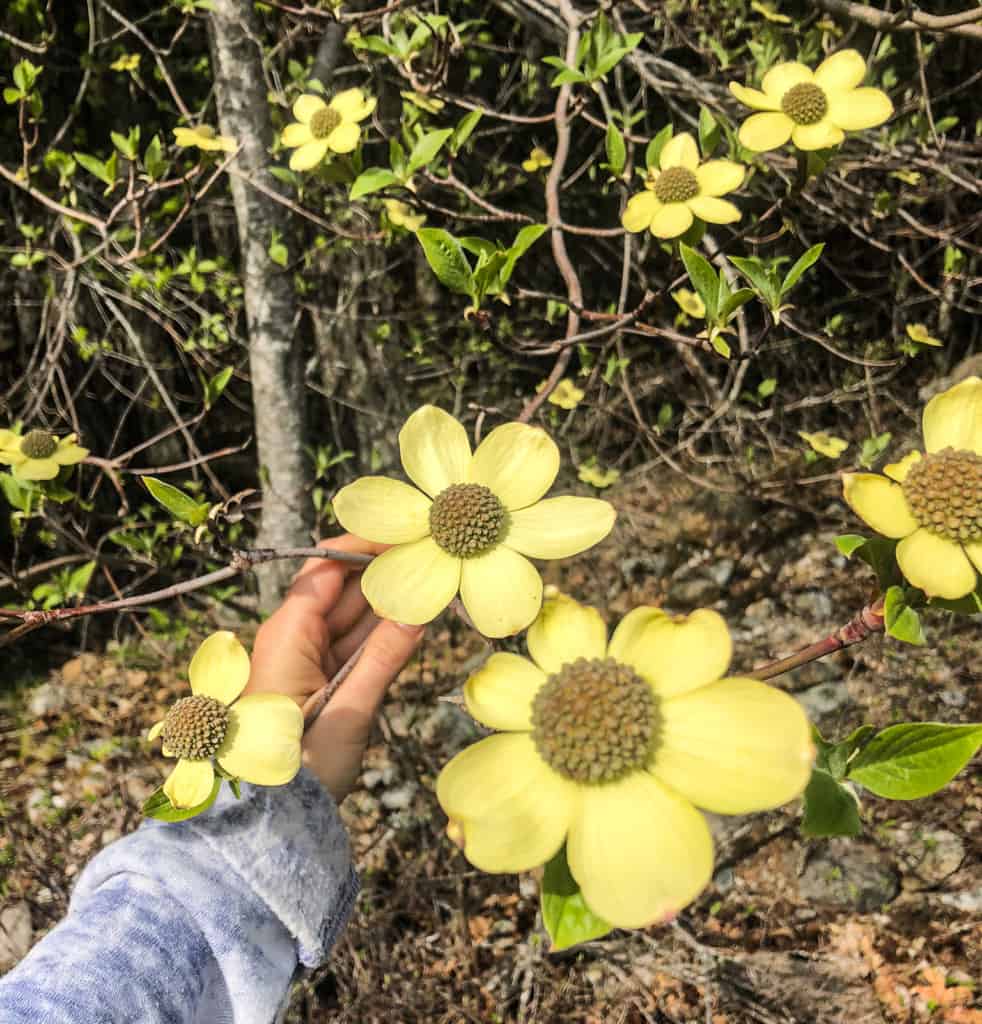
Pacific dogwood, Cornus nuttallii: This deciduous tree with smooth, dark bark and oval, pointed leaves often pops up along streams, where it can find plenty of water. The beautiful flowers that greet the spring (and sometimes come back for an encore in the fall!) are actually made up of many flowers. The center domes are in fact clusters of many light green flowers with purple tips, framed by 4-6 creamy white bracts that are oftentimes mistaken for petals. In any case, these flowers transform into bright red bundles of berries later in the season. It is hypothesized that these berries might be a reason for the name “dogwood” as it is thought that even dogs should not consume these berries as snacks.
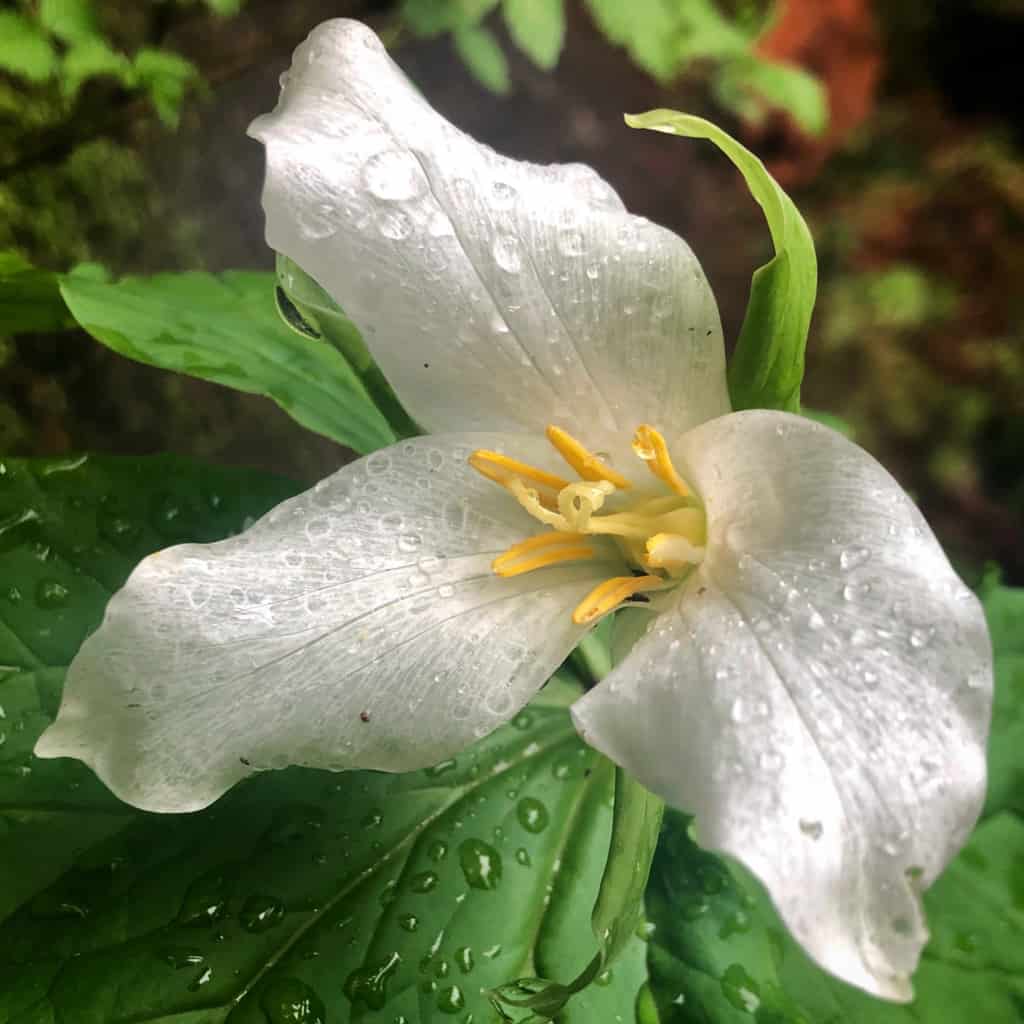
Trillium, Trillium ovatum: This member of the bunchflower family has a singular springtime joie de vivre; another name for it is “wake robin”.The flowers change from white to deep magenta with age. For some botanical trivia, it’s interesting to note that what you see above-ground is not the stem, three leaves, three littler leaves, then the flower with its various parts. Rather, you see the stalk, three bracts, then three narrower, lighter green sepals. Then of course the flower whose parts come in multiples of three. And for home horticulturalists, this distinctive beauty can be cultivated at home from seeds gathered from the plant in late summer. You must simulate a double dose of winter, chilling them twice before they’ll germinate. This ostensibly mimics the transition from winter to spring that we’re familiar with here in the PNW.

Kinnikinnick, Arctostaphylos uva-ursi: This evergreen groundcover is as well-known as it is widespread. It seems common knowledge that in a pinch its fruits can be eaten mid-winter. Many have heard that its common name is an Algonquin word referring to a smoking blend. And it seems broadly known that its species name refers to its other common name of bearberry, because bears (not to mention other hungry mammals) often consume its fruits. That may be the one misconception associated with this hardworking heath: rather than berries it bears drupes. Another example of a drupe is a peach, with its stoney pit. And if you get truly lost in the dead of winter and dig desperately in the snow for sustenance, your elation at finding kinnikinnick just may cause you to find it as delicious as a ripe, juicy peach.

Sword Fern, Polystichum munitum: In early spring, before the sword ferns have unsheathed their new fronds, it can be peculiar to see the forest floor laid so bare. Soon they blanket the understory in their bulky softness, and they have indeed been used by indigenous people as bedding. Strangely, this massive mattress of the forest floor gets its species name from the same root as munition, as in weapon. On the underside of the ‘swords,’ you can find the small reproductive structures called sori (sorus is singular), protected by a scale-shaped tissue called an indusia. Under this are the actual spores, which can be so dense that they’ll coat your hand in a cinnamon-colored powder when they’re mature.

Bleeding Heart, Dicentra formosa: An optical delight from the classy, fern-like leaves, up and over the long stalk and clear to the dangling dainty pink corazon. Bleeding Heart often hides in semi-shade, confident in its own beauty and not needing to be in the direct solar spotlight. It fraternizes amicably with ferns, twinflower, and other partial-shade celebrities in the wild and the home garden. If you seek it out at a nursery by its common name you may find its showier Japanese cousin, D. spectabilis for sale. Our D. formosa’s pendant flowers feature two fused petals concealing two more fused petals, ostensibly to keep its pollen fresh for pollinators. Calling all hummingbirds!
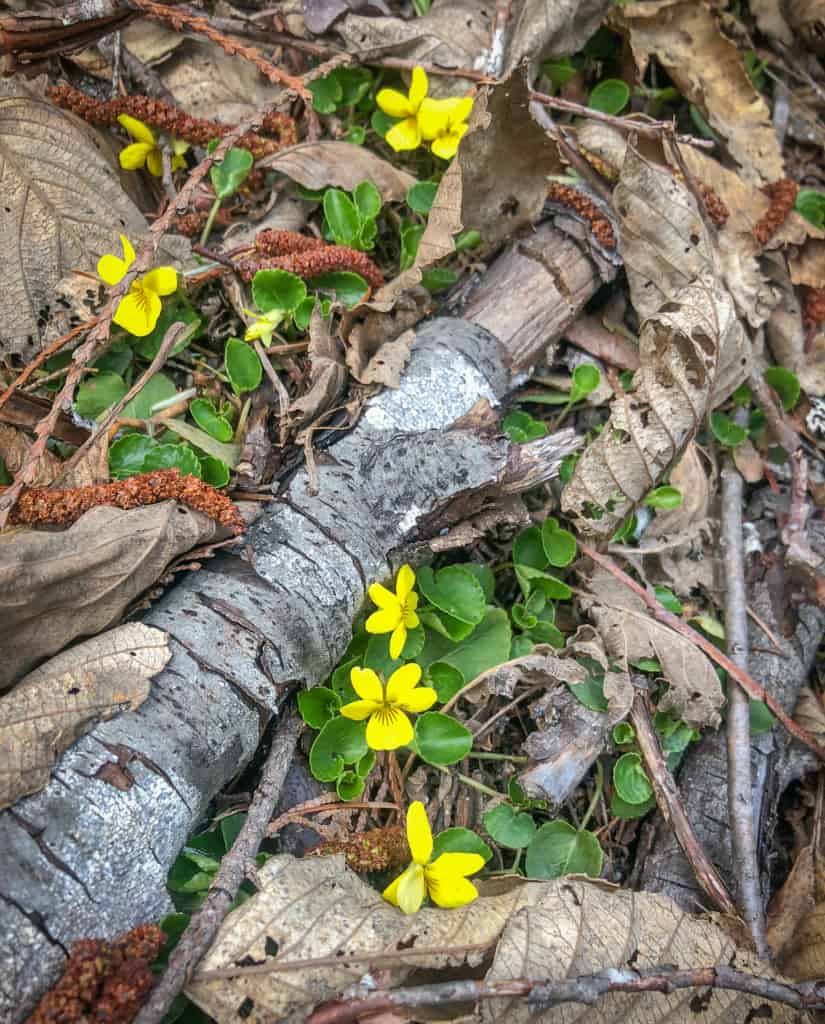
Evergreen violet, Viola sempervirens: You’ll know you have found a patch of Evergreen violet, also known as Trailing yellow violet, when you see small, bright yellow flowers amongst leathery, heart-shaped leaves. The flowers consist of five petals, the lower three showing some purple detailing. This plant’s superpower is in the way it is able to disperse its seeds in an exciting catapult manner, flinging them with force into the damp forest.
Thank you for enjoying these flowers with us! As always, we invite you to share your nature pictures with us—please reach out at photos@ncascades.org and your photos just might appear in our next blog post!


Uplifting article. I have been concentrating on the “little things” this spring. These things that have gone on being beautiful regardless whether I would choose to notice or not. My home, the N.Cascades, offers up precious gifts, if we will stop and see.